Remote Power Switches
These are devices which provide unfiltered electrical pass-through power through their outlet receptacles with added monitoring, management and control features achieved either locally or remotely via the network. Note that a PDU does not generate neither does it condition power to the outlets, what it does is provide the power as it receives it.
Basic PDUs (Power Strips) simply provide a means of distributing power from the input to several outlets while an intelligent Power Distribution Unit (PDU) fills the gaps that the typical power strip cannot. It provides a central unit to control and distribute electricity across the different connected devices.
Our team has done a review of some of the top/ best performing PDUs currently available and discussed PDUs at length here.
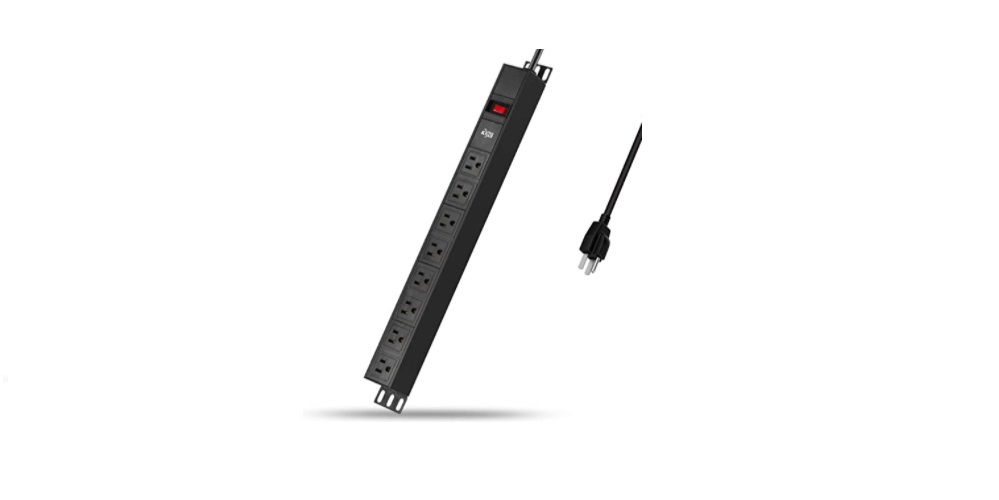
Figure 1: Basic PDU
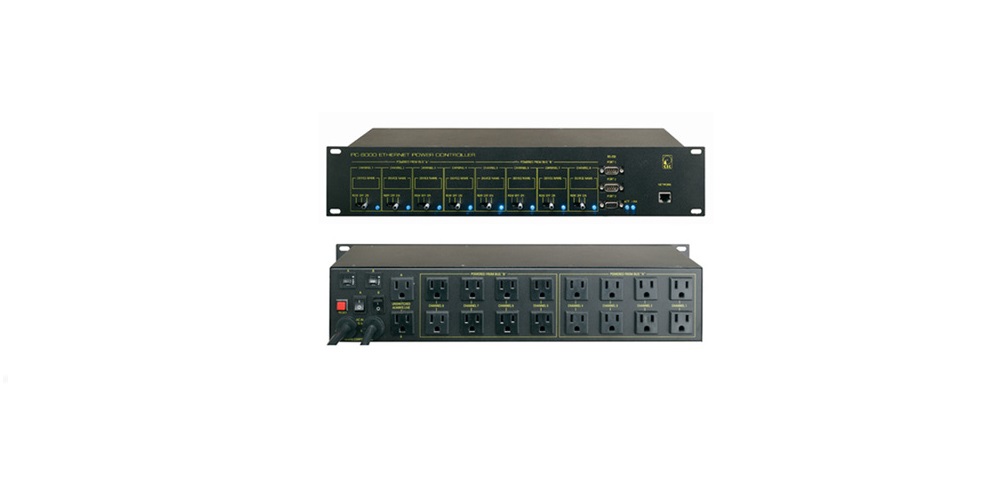
Figure 2: Intelligent/ Managed PDU
Intelligent/ Managed PDUs allow for remote management of power metering information, power outlet on/off control, and/or alarms. Some advanced PDUs allow users to manage external sensors such as temperature, humidity, airflow, etc.
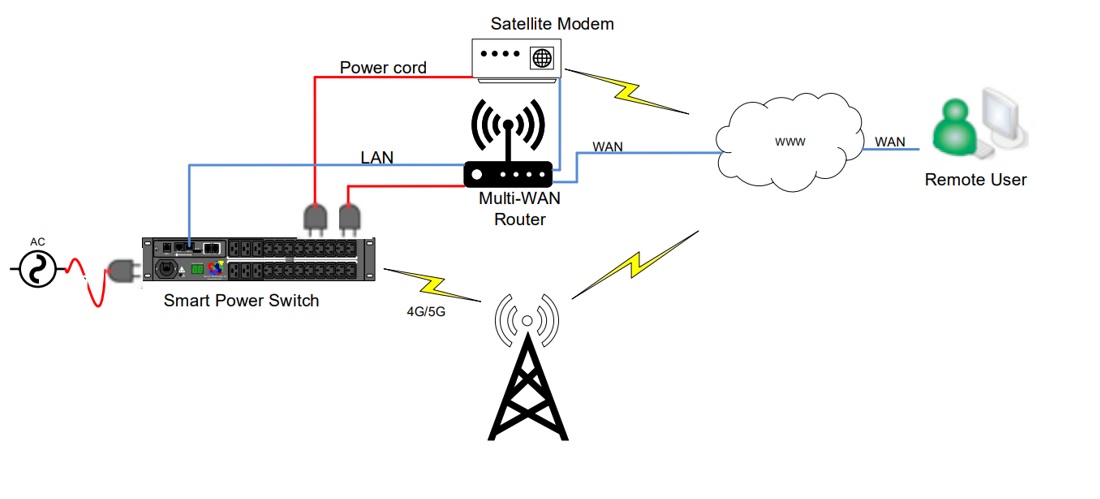
With the increased internet usage and adoption of IoT, smart power switches are essential for monitoring and controlling power to components connected to the network. You could easily do this on a web app or your phone.
Monitoring IP Cameras
Consider surveillance cameras on a network with connection to POE switch which is powered via a smart web switch. When there is an issue with the camera connectivity, individual cameras can be rebooted via the POE switch. Otherwise, one can reboot the POE switch on the smart power supply unit if the devices are unresponsive.
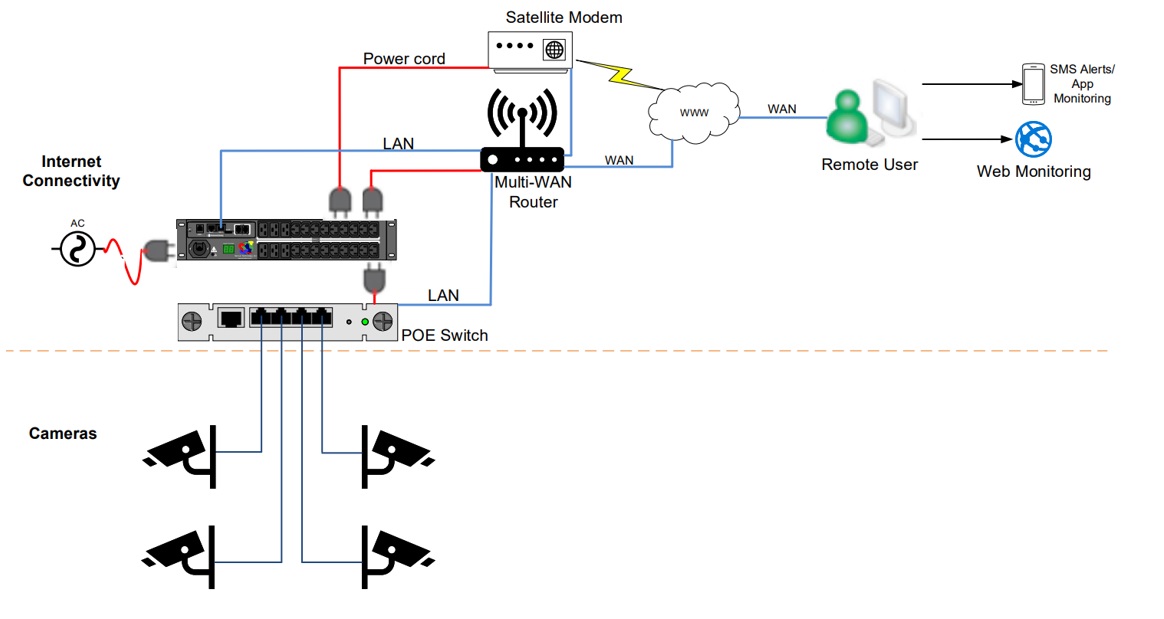
Other IoT Devices
Consider other IoT devices with different input interfaces connected to a network as below. A smart PDU can be used to monitor power consumption of the devices as well as reboot them if need be.
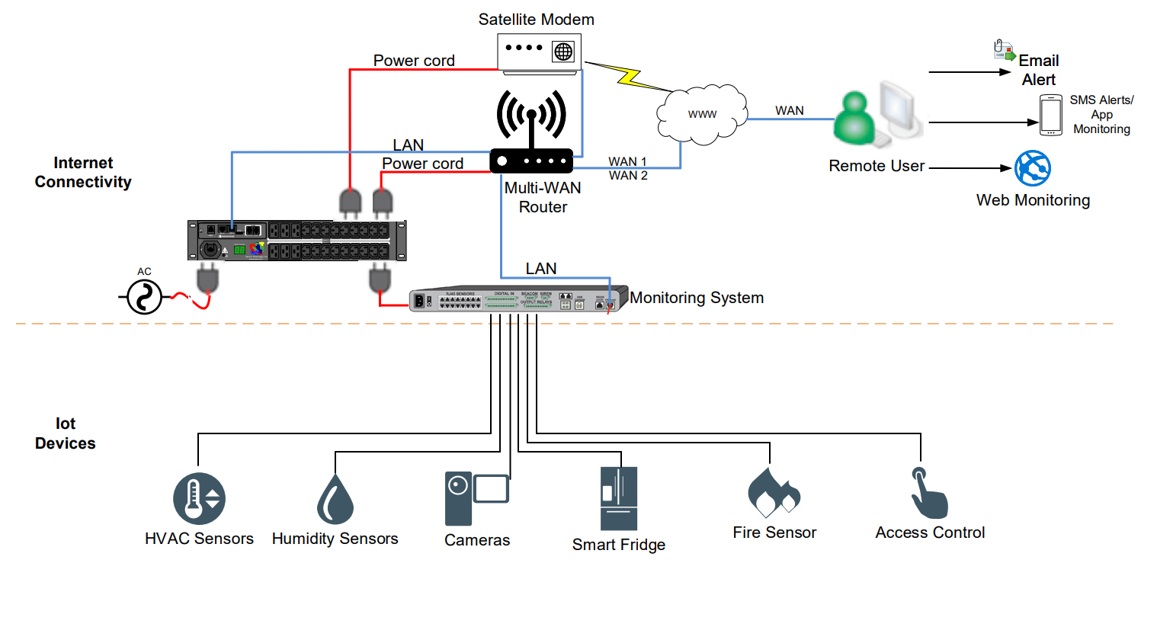
You Can check out Rfwel’s RTU integration system with high performance LTE routers, Remote terminal Unit (RTU) and power switch.
Choosing a Power Distribution Unit
Primarily consider the following before settling for a PDU:
- Type of PDU whether metered, monitored, switched etc.
- Form factor and Nature of installation (0U, 1U, 2U)
- Available Input Power & Expected Output Power
- Number of Outlets & Nature of Electrical outlets
Power switches like Digital loggers LPC7 provides an autoping feature which is used to reboot the outlet which connects the WAN device in case the connection has timeouts. Also, custom scripts are possible with remote switches like the LPC7. Consider, cycling a specific port daily at a specific time.
-- Cycle an outlet daily at 1:00am
function cycle_outlet_daily()
while true do
wait_until({hour=1, min=0})
outlet[2].cycle()
delay (60) -- prevent it from running more than once in the same minute
end
end
Applications
The web power switches can be applied in the following areas where IoT devices have been interconnected in a network:
- Data-centers
- Smart Agriculture and greenhouses
- Livestock and Poultry Monitoring
- Telecommunication
- Smart homes
Contact an RfWeL Power Specialist for power monitoring system implementation at home or in a business.

